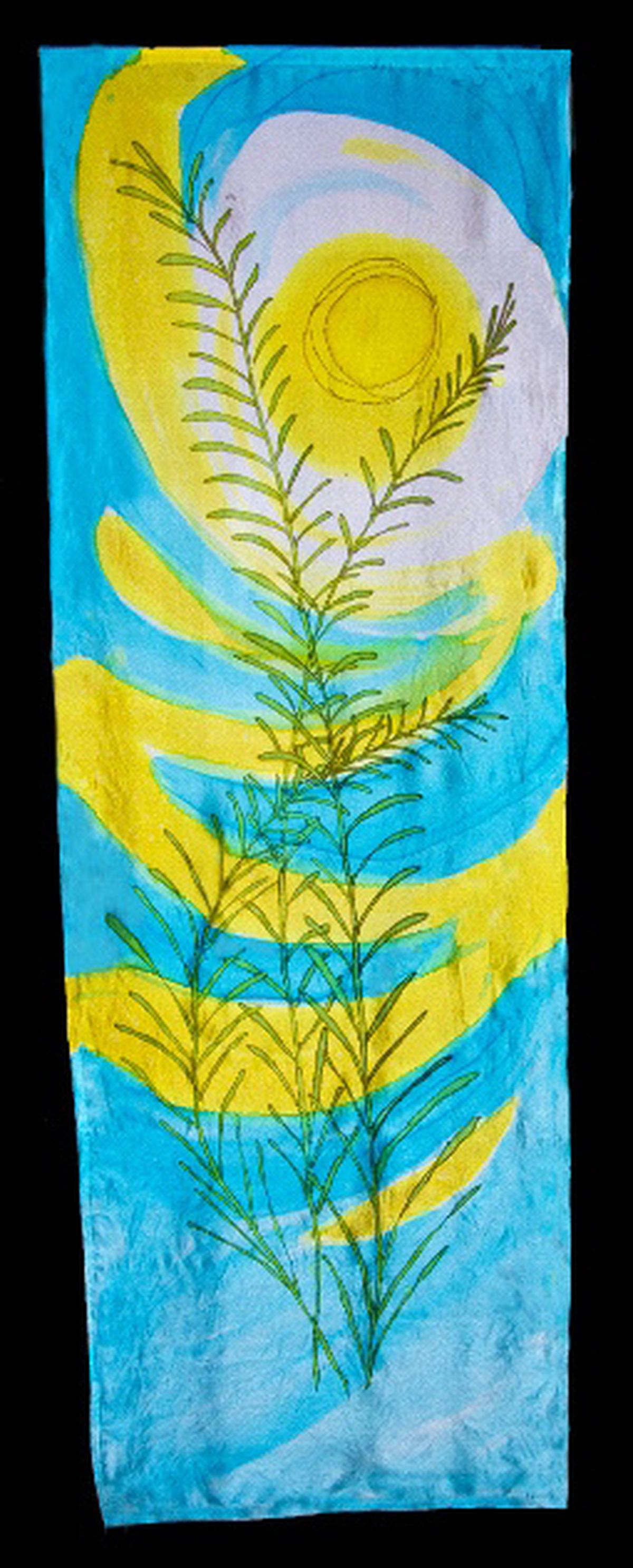Fiber artist finds inspiration in life experiences, natural world
From painted silk to woven wool, pieces reflect spirituality

At 65, Mary Ann Sinclair is blooming.
A caregiver by trade, she applied her social work degree to her work with vulnerable people – the disabled, the incarcerated – in homes, schools and other institutions.
When her oldest daughter, Theresa, became ill, Mary Ann devoted her days to caring for her, until Theresa’s death, at 33, in 2012.
Now, in the early years of “retirement,” Sinclair devotes her days to her vocation as a fiber artist – creating shawls and stoles along with wall hangings and smaller pieces – and she feels as if she’s blossoming. Every morning, she said, she wakes up to her pick of creative projects.
Sinclair makes artwork that reflects her spirituality – she’s a churchgoer “on the cusp,” she said, who feels a responsibility for her own spiritual development – but also a lifetime of inspiration and a sketchbook packed with ideas.
A show opening tonight at Avenue West Gallery highlights the diversity of her work. The dozens of pieces in the show include painted silk scarves, garments woven from wool and alpaca, and a felted chair. Her “Triptych of Trees” wall hanging is woven from lime-green bamboo thread overdyed with tobacco using the Japanese shibori method; she gathered the fabric during the dying process so only some parts gained color. To create dimension, she hung the piece with “leaves” made of chipped glass.
As an artist, Sinclair started as a rancher. For two decades, she bred and raised Shetland sheep on her family’s land north of Spokane. The breed’s wool is valued for its fine shaft and natural color. Sinclair was doing her own shearing, carding and spinning – untangling and cleaning the wool before drawing it out and twisting it into yarn – for years before she started doing her own weaving.
“I love the feel of wool,” she said. “That was my first love.”
Now she also exposes herself to other fibers – angora, bamboo – and new skills, following her ideas where they lead. She carries a sketchbook, drawing and journaling even in prayer. She often finds inspiration in nature.
She took drawing classes to get better at painting on silk. Interested in creating her own weaving patterns, she tracked down a mentor who could teach her the Theo Moorman technique, developed by that artist to weave pictorial pieces in less time than traditional tapestry weaving. She found someone else to teach her to work with stained glass.
“Whatever I need, I do,” Sinclair said. “And I’m always experimenting. I never do the same thing twice.”
Sinclair also travels in the summers to the Grunewald Guild, a retreat northwest of Leavenworth, Washington, where visitors often explore connections between religious faith and art.
“I’ve never thought of myself as an artist,” Sinclair said. “But I look around, and I’m thinking, ‘You’re acting it. So you better believe it.’ ”